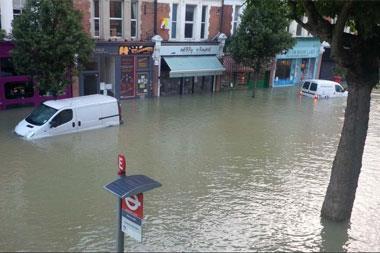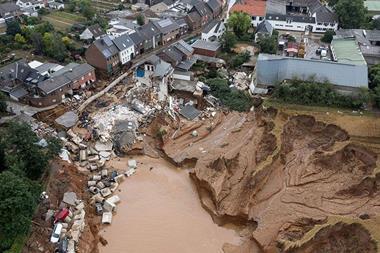Flood is the most frequently-occurring natural hazard - so should it still be considered a secondary peril?

Losses from flood continued on the upward trend globally in 2021, with Swiss Re sigma records showing that flood is the most frequently occurring natural peril. In the past decade there were approximately 3 times as many major flood events as tropical cyclones.
Major floods in Germany and China were among the events that drove total economic catastrophe losses of $270 billion for the year.
The July floods in Europe with the costliest natural disaster on record for the region, causing over $40 billion of economic losses (around $13 billion of which were insured).
Given the scale of the devastation caused by events last year and more recently along Australia’s east coast, there is an argument that flood risk should no longer be considered as a secondary peril. This is because the risks and impacts of secondary perils are not as well monitored or modelled as peak perils, such as windstorm.
“We are seeing a reoccurring pattern that flood risk, together with climate change, is leading to a higher frequency of events in a way that makes it harder to predict what will happen over time,” says Jan Bachmann, head of Innovative Risk Solutions at Swiss Re Corporate Solutions.
In a highly interconnected world, the impact of a major flood can be felt both directly and indirectly. “If an entire geographic area is inaccessible this causes a lot of additional costs,” explains Bachmann. “So it’s not just about the physical damage but also the supply chain and business interruption aspects.”
Leveraging flood monitoring data
Insurers can help address the critical vulnerability presented by flood risk by increasing the focus on secondary perils and developing tailored solutions designed to shield business and society. With floods affecting nearly a third of the global population, and a sizeable protection gap, there is an urgent need to make use of emerging technology and data.
Corporate Solutions is collaborating with satellite company ICEYE, which uses space radar technology to offer near real-time flood observations. Insights can show how events unfold with an accuracy that was not previously been possible for a highly dynamic peril such as flood.
This opens up the possibility for parametric covers based on flooded areas or critical sites impacted, for instance, as well as providing insights that can be used by corporate risk managers to improve the flood resilience.
Access to detailed loss data in the immediate aftermath of a flood can significantly improve the claims handling process, ensuring those affected receive prompt pay-outs allowing them to get back on their feet as quickly as possible.
“Liquidity management after catastrophic events is essential because, for instance, your utilities may go down, you may be faced with clean-up costs or have to rent a new building,” notes Marco Adamo, structurer at Innovative Risk Solutions, EMEA, Swiss Re Corporate Solutions.
“On average, parametric solutions pay out within 15 to 30 days following a notification, so that liquidity immediately arrives when it is needed.”
With parametrics, pay-outs also do not have to rely on physical damage as a trigger. Through its FLOW solution, for instance, Corporate Solutions was able to structure a business interruption solution based around the readings of river gauges in Central Europe.
The product pays out when water levels go too low or high for barges and other vessels to safely access the waterways upon which they trade. When this happens, the insured receives a pay-out for the disruption or extra expenses that are likely to be sustained.
Risk mitigation and resilience
It is not just about risk transfer. Access to more granular hazard information has an essential risk mitigation role, particularly as climate change continues to influence weather extremes.
“It’s important for the risk manager not only to consider their current exposure, but also the exposure they might have in 30 years time and to think about how the frequency and severity of events is actually increasing,” says Adamo.
“Physical climate risk assessment enables companies to understand the effects of climate change on their physical portfolios – now, as well as in the near-, mid- or long-term. Swiss Re’s Climate Risk Solutions considers the exposure, not only to flood, but other natural hazards over time as well,” he continues.
“The attention should go far beyond an organisation’s individual premises to consider egress or ingress problems - perhaps there is a bridge nearby – and/or potential bottlenecks from critical suppliers or critical customers. All this data needs to be captured and analysed, so you can make sense of the insights on offer.”














No comments yet